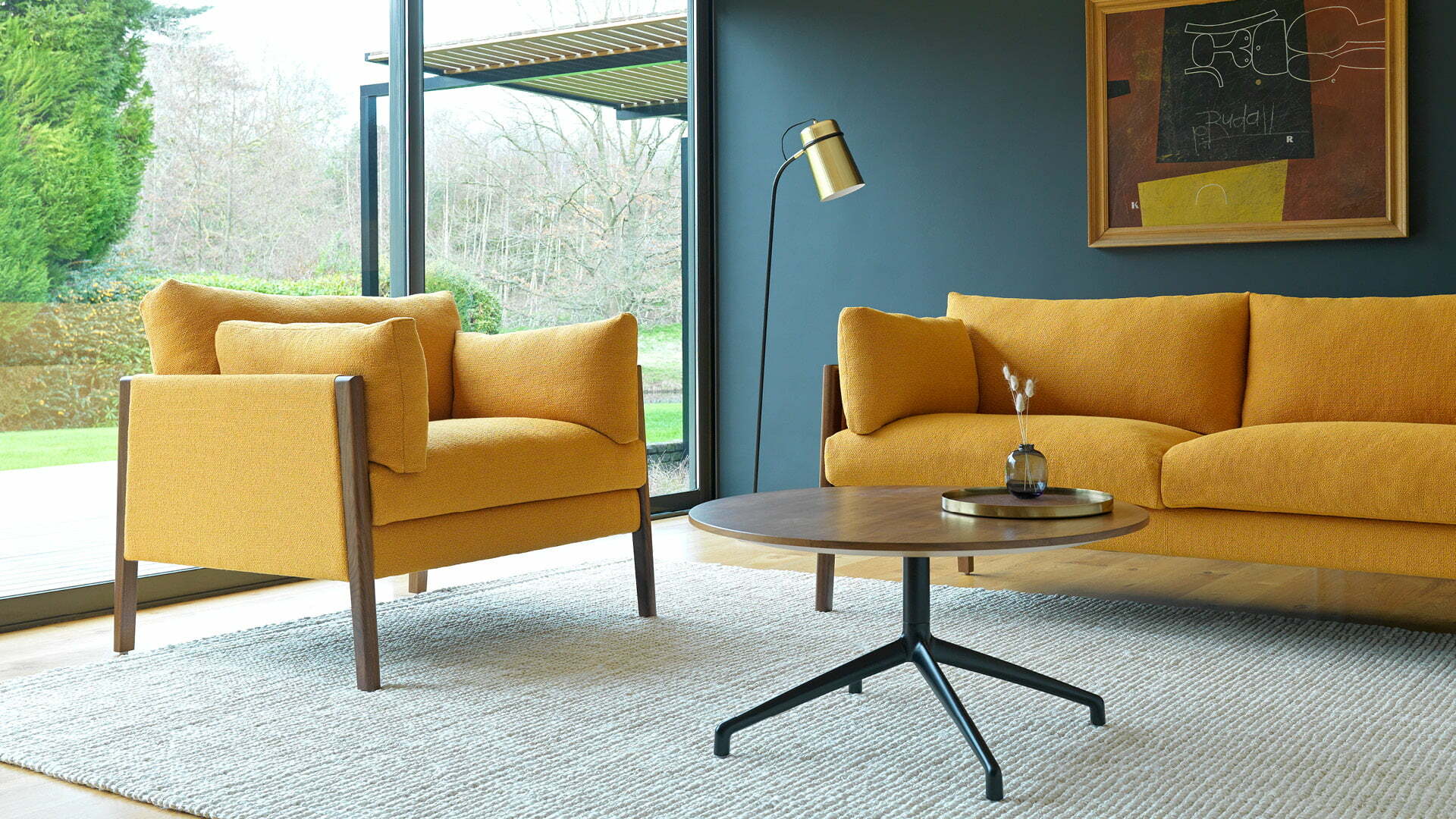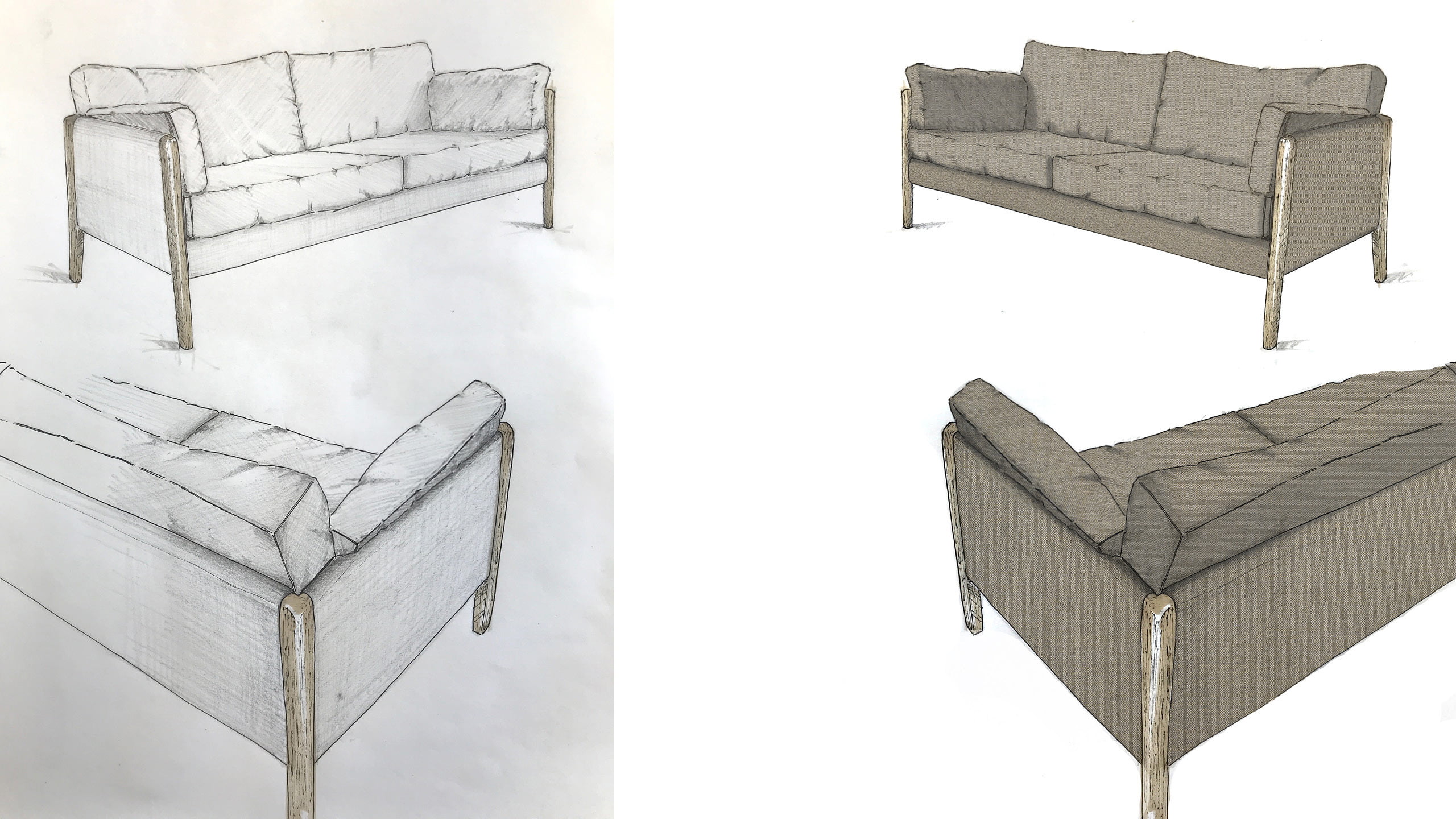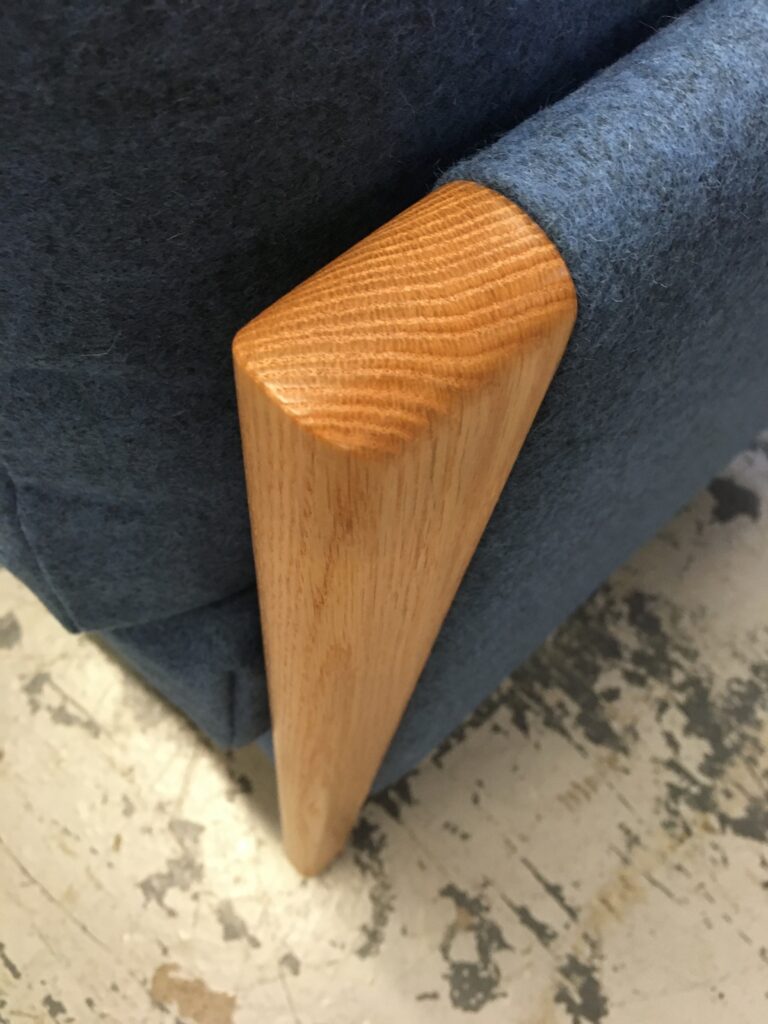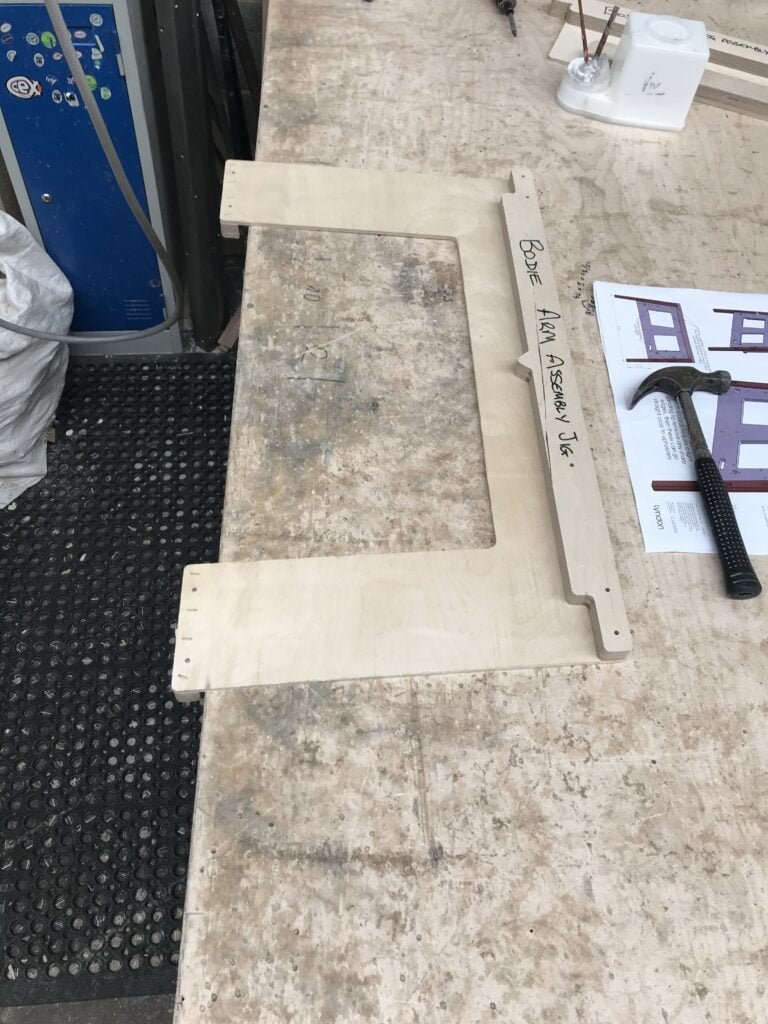
Looking back, the development for the Bodie collection was very streamlined – one of those nice occasions when the design just seemed to organically materialise and the final, manufactured sofas and armchairs look remarkably similar to our original concept sketches. It’s almost as though the hand of the artist is evident in the furniture, lending very much to the human-centric feel we were aiming for.
From the outset, we wanted to design a sofa that put the emphasis on comfort – something that feels homely, lived-in, embracing, soft and ruffled, but that would fit naturally into a variety of situations and environments. There was a Scandinavian design influence in terms of its clean aesthetic lines, but more than anything we wanted seating that would be quintessentially Lyndon, where show-wood timber and soft upholstery would meet in a harmonious way.
What makes Bodie so interesting is the two contrasting elements within its design. Externally, Bodie is all about structure. Its crafted outer timber legs support a frame that is well-made and durable thanks to its CNC machined mortise and tenon joinery. That external structure is almost like a protective shell. Internally, Bodie’s fabric and cushioning create a soft, nurturing space that invites you to sit deep into the upholstery, lean back and exhale. Wherever Bodie is situated, it’s like a relaxing home away from home – protective and comforting.
How the structure developed was one of the great things about this project. Once we’d rationalised the sketch work and went into prototyping, we reached our final build very quickly. We adjusted some of the proportions for a compact footprint and a suitable ergonomic sit.

An important detail of the woodwork is the roundover on the top of the legs, which we introduced not just to soften the structure but to bring out the natural grain of the wood. Bodie comes in oak and walnut, and both these materials produce lovely individual patterns when the wood is worked into its rounded form. No two are ever the same.
The fabric that wraps over the arm was key in the original sketchwork, and it helps smooth the contrast between Bodie’s solid external structure and its soft, inviting inner sanctum.
Getting the upholstery right was crucial to giving Bodie its character and its appeal. We moved away from the conventional angularity of the cushions in some of our original sketches, and instead aimed for pillow-like forms for a greater level of comfort. Working with our development team, we experimented with more filling, less filling, changing the foam cores, chamfering the foam and so on, refining the forms for optimum appeal.
It was important that the cushions looked soft and inviting. The eye naturally uses horizontal and vertical lines as reference points, so we chose to position fabric seams in the outer corners and edges. This makes for a smoother transition between surfaces, adding to the softness of the interior elements.
The minimalist fabric ‘wrap’ detailing reoccurs around the form and presents a gentle appearance. Rather than a crisp finish, the cushion upholstery is loose and responsive to the sitter, allowing ruffles to appear and disappear, making a very natural impression both visually and in terms of tactility.
In today’s world, where products can seem so streamlined and perfect, Bodie’s organic shape and its contrasting elements of structure and softness are refreshing and inviting. Bodie is a warm, homely, human-centric sofa encapsulated in a timeless, contemporary form.



_
Boss Design, September 2023
Boss Design North America
High Point N.C. 27262
t. +1 336 889 9400
Boss Design UK
DY2 8SZ.
t. +44 (0) 1384 455570
© Boss Design.

Please wait while you are redirected to the right page...